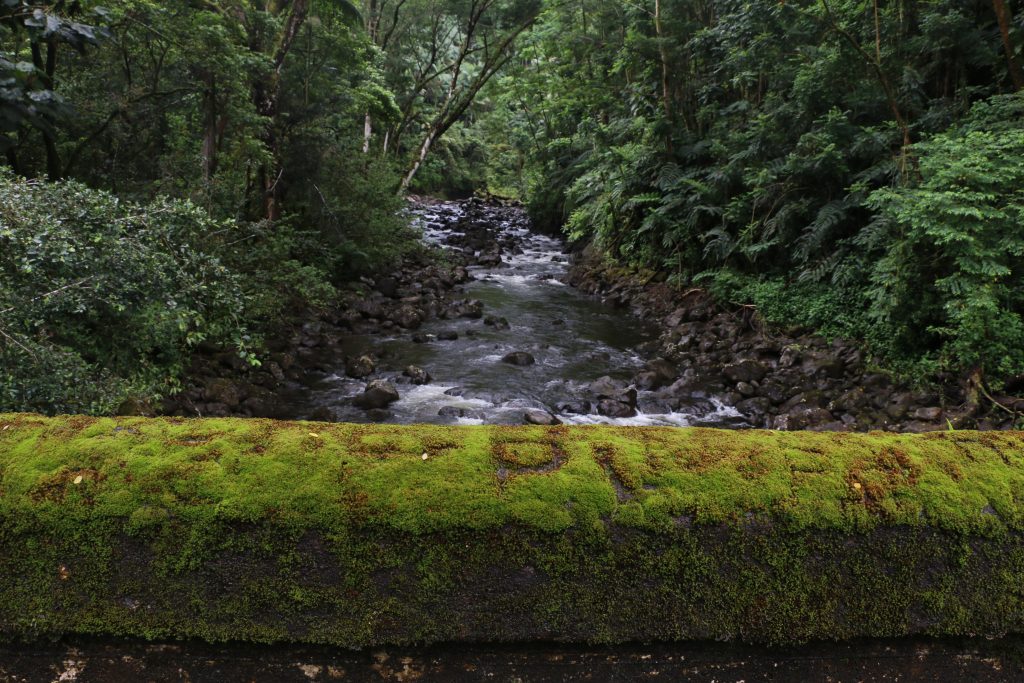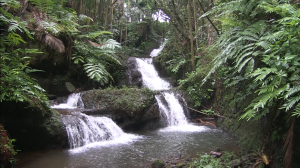Graduation Season Tahitian Prawns Warning Issued; Poison Used in Some Hawai‘i Island Streams to Harvast Prawns
Posted on May 12, 2018 in AnnouncementsDEPARTMENT OF LAND AND NATURAL RESOURCES
News Release
| DAVID Y. IGE GOVERNOR |
SUZANNE D. CASE
CHAIRPERSON |
For Immediate News Release May 12, 2018
 (Click on image to watch video)
(Click on image to watch video)
GRADUATION SEASON TAHITIAN PRAWNS WARNING ISSUED
Poison Used in Some Hawai‘i Island Streams to Harvest Prawns
(HILO) – Tahitian prawns, caught in Hawai‘i streams, are a popular treat at graduation and other spring-time parties and get-togethers. The DLNR Division of Conservation and Resources Enforcement (DOCARE) is encouraging people to know the source of their prawns. Evidence has suggested that poisons used to kill garden and household pests has been used not only to kill prawns, but is wiping out all of the aquatic wildlife in some east Hawai‘i streams.
Last fall DOCARE officers investigated at least two cases of mass stream kill-offs, likely associated with the harvest of Tahitian prawns, also known as giant freshwater shrimp.
At Hawai‘i Tropical Botanical Garden, on the Hamakua Coast north of Hilo, Onemea Stream cascades down a steep slope and into a calm pool next to one of the garden’s walking paths. Officers and garden staff believe someone trespassed onto the property after hours one night last October and poured a container of Bug B Gon insect killer into the Onemea pool. The product claims it kills 235 different pests and now Tahitian prawns are among them.
Officer Edwin Shishido who investigated the case said, “We found an empty bottle of the insecticide on the stream bank and found that there were not only no Tahitian prawns in the stream, but it looks like the poison killed everything. This was almost eight months ago and now finally with winter rains some life appears to be slowly coming back.”
At another stream, farther up the coast, and also last fall officers encountered men hauling 50- pound bags of prawns out of the stream. They believe poison was also used at this location to quickly kill and harvest prawns…in the process decimating every living creature in the stream. It is not illegal to take Tahitian prawns out of Hawai‘i waterways but it is against both federal and state law to introduce any kind of poison, insecticide, or rodenticide into a stream or river. Shishido adds, “We heard some people got sick after eating prawns killed in Onemea Stream. We also believe that the people doing this sometimes set up alongside roadways to advertise and sell prawns caught in this manner. It’s really important that buyers beware and know for certain where and how the prawns they’re buying were caught.”
The recent cases prompted DOCARE to enlist the help of inspectors from the Hawai‘i Dept. of Agriculture (HDOA). On one recent morning a large group of Hilo-based DOCARE officers joined an HDOA inspection team on a tour of more than a half dozen streams pouring down the east slope of Maunakea.
A few days later the agriculture inspectors were back at some of the streams taking samples to get baseline water quality samples in case they’re called back out after a suspected stream poisoning. When and if that happens they plan to take water and sediment samples which can help investigators build a case.
Earlier this week, a private land owner contacted DOCARE, after a man was spotted trespassing onto the property and to a stream where previous poisonings are believed to have occurred. Officers interviewed the man but didn’t have enough evidence to charge him. “With probably a hundred or so streams in East Hawai‘i, we obviously can’t be everywhere, all the time,” Shishido explains, “and this is why we need people’s help in immediately reporting suspicious activity along or in our streams and rivers.”
Last fall’s apparent Onemea Stream poisoning led Hawai‘i Tropical Botanical Garden to add overnight security. “Before the poisonings here,” gardener Ryan Medeiros explained, “We used to see 10, 20, or 30 prawns in a pool and now we’re lucky to see one. We all like to catch and eat these prawns but it’s sad and wrong to harvest them this way.”
Anyone who sees what they believe is suspicious or illegal activity happening near or in a stream is encouraged to call the statewide DOCARE hotline at 643-DLNR or download the free DLNRtip app on their smart phone.
# # #
Media Contact:
Dan Dennison
Senior Communications Manager
(808) 587-0407
